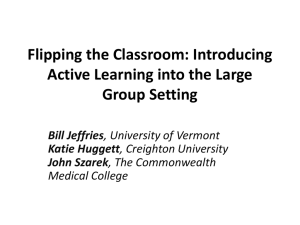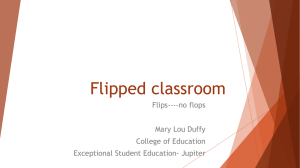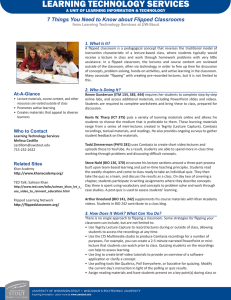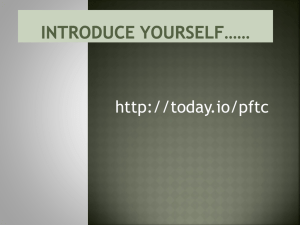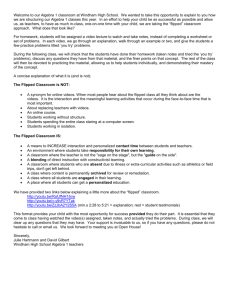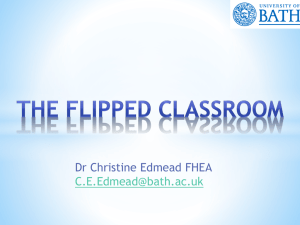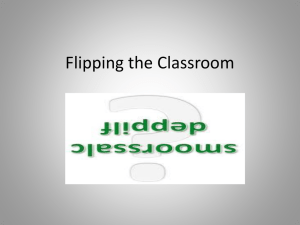Flipping the Classroom
advertisement
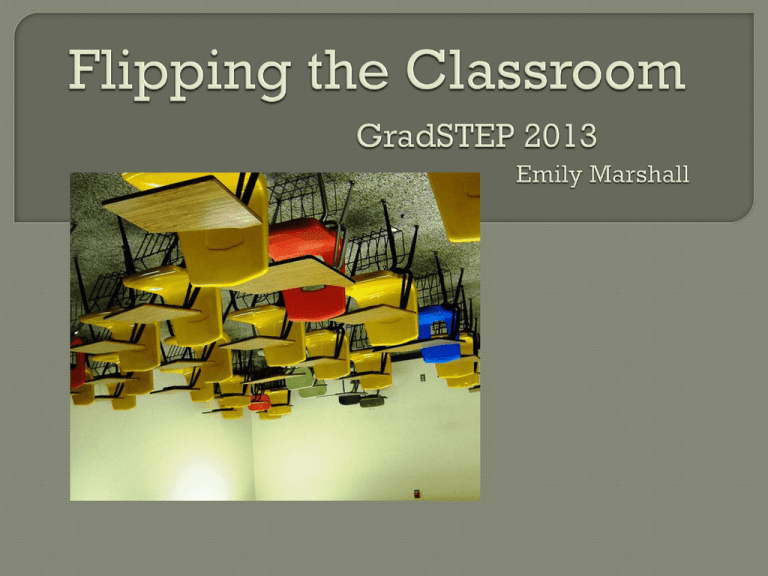
What is the Flipped Classroom? In Class At Home •Problem solving •Application of material •Collaboration with peers •Interactive activities to facilitate learning •Feedback and instruction from the teacher •Exposure to new material via online videos Some of the early pioneers of the idea… Jonathan Bergman and Aaron Sams Chemistry Teachers Woodland Park High School in Colorado new book published in July 2012: “Flip Your Classroom: Reach Every Student in Every Class Every Day” Jonathan and Aaron What are the benefits? What are the benefits? At home - pause, rewind, and review the videos In class - process, analyze, and apply new material with the assistance of fellow classmates - receive instant and individualized feedback from the instructor - remain active and engaged during class - demonstrate a deeper understanding of the material by assisting others in their learning What are the drawbacks? What are the drawbacks? At Home -Students must be motivated to watch videos on their own -Additional preparation time for instructors -Limited internet access or access to technology for some students In Class -Difficulties in facilitating collaboration between students Khan Academy -Founded by Salman Khan -Over 3800 free online videos on a variety of topics for K-12 students -Random problem generator to practice your skills -Funded by Bill & Melinda Gates Foundation and Google and others Khan's Ted Talk Is the method effective? -One study in 1998 evaluated students in introductory physics classes using pre/post test data. Those taught using interactive engagement methods scored two standard deviations higher than those taught using traditional passive methods . -Another study in 2011 monitored students taught in the same classroom for most of the semester. One section was “flipped” for one week towards the end while another section remained the same. Those in the flipped classroom scored on average 30 percentage points higher in an assessment at the end of the week. Who is trying it? The University of Michigan at Ann Arbor has been flipping its calculus courses since the mid-1990s. - classes are capped at 32 students - the course meets three times each week for 80 minutes - instructors undergo a weeklong summer training session and weekly follow-up meetings throughout the semester Discussion in Disciplinary Groups -Have you experienced a flipped classroom in your education? Was it effective? -How could you model the flipped classroom in your classes at Vanderbilt? -Are there specific topics that would work better under this method? -How effective will it be in your discipline? -What are some of the potential drawbacks for the students and the instructors? Plan a Flipped Lesson 1. What are the goals of the lesson? 2. What will be the at home content? How will it be delivered? 3. What will be the in class content? How will the class time be structured? 4. How will you assess the students at the end of the lesson? http://www.flickr.com/photos/44551921@N04/6240707542/sizes/z/in/photostream/ http://www.flickr.com/photos/uiowa/8047278840/sizes/z/in/photostream/` Sources Hake R (1998). Interactive-engagement versus traditional methods: A six-thousand-student survey of mechanics test data for introductory physics courses. American Journal of Physics 66: 64-74. DesLauriers L, Schelew E, and Wieman C (2011). Improved learning in a large-enrollment physics class. Science 332: 862-864. Berrett, Dan. "How 'Flipping' the Classroom Can Improve the Traditional Lecture." The Chronicle of Higher Education 58.25 (2012). Academic OneFile. Web. 9 Jan. 2013. "Flipping the classroom; Electronic education." The Economist [US] 17 Sept. 2011: 32(US). Academic OneFile. Web. 9 Jan. 2013. Álvarez, Brenda. FLIPPING THE CLASSROOM: Homework in Class, Lessons at Home The Education Digest 77. 8 (Apr 2012): 18-21. Makice, Kevin. “Flipping the Classroom Requires More Than Video” 13 Apr. 2012. http://www.wired.com/geekdad/2012/04/flipping-the-classroom/


